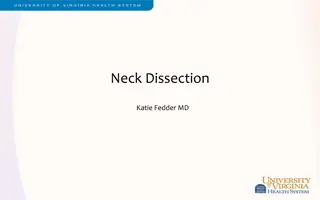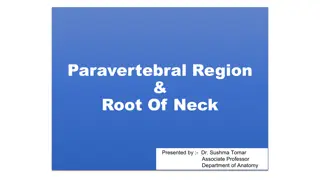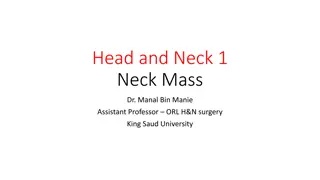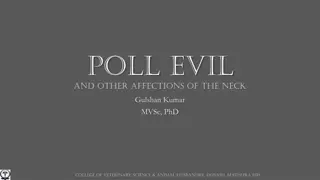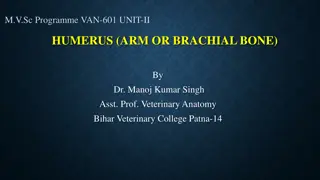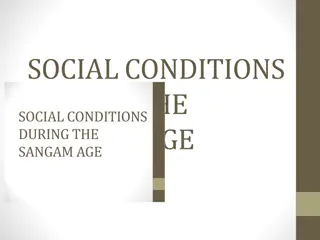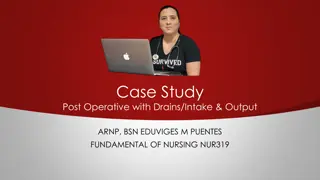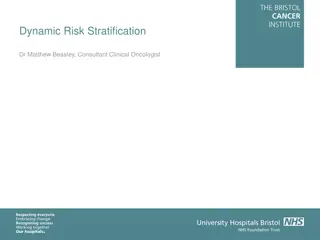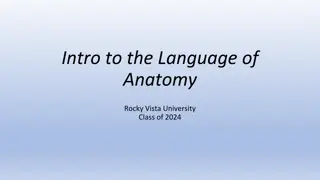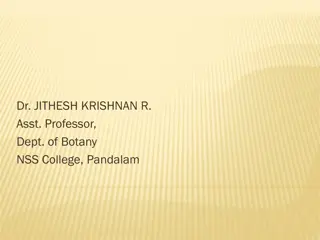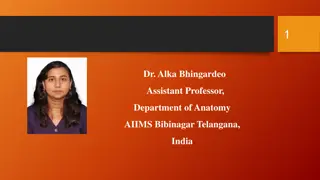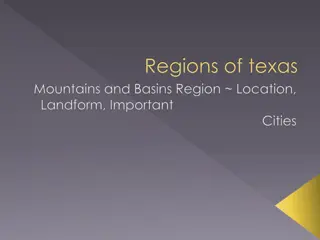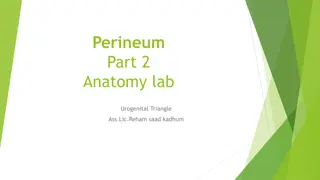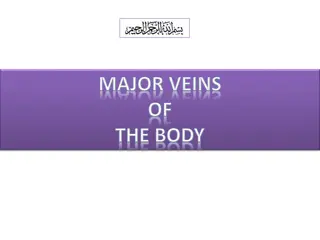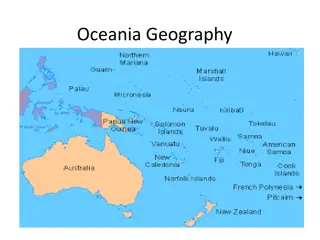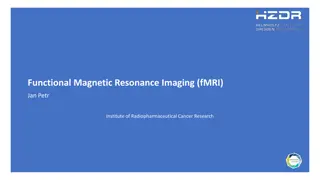Anatomy of the Prevertebral Region in the Neck
The prevertebral region in the neck extends from the 1st cervical vertebra to the upper two thoracic vertebrae. It includes structures like prevertebral and paravertebral muscles, cervical plexus, sympathetic chains, and large vessels. The prevertebral muscles, including rectus capitis anterior and lateralis, longus cervicis, and longus capitis, play a crucial role in head flexion and lateral movement. Understanding these structures is essential for anatomical knowledge of the neck region.
Download Presentation

Please find below an Image/Link to download the presentation.
The content on the website is provided AS IS for your information and personal use only. It may not be sold, licensed, or shared on other websites without obtaining consent from the author. Download presentation by click this link. If you encounter any issues during the download, it is possible that the publisher has removed the file from their server.
E N D
Presentation Transcript
Prevertebral Region Presented by :- Dr. Sushma Tomar Associate Professor Department of Anatomy
INTRODUCTION PREVERTEBRAL REGION OF THE NECK- Extends from 1st cervical vertebra to the upper two thoracic vertebrae. PARAVERTEBRAL REGION OF THE NECK- Lies on either side of prevertebral region. Extends from transverse process of 1st cervical vertebra to the 1st rib. ROOT OF THE NECK- Area of the neck immediately above the thoracic inlet.
Structures in the Pre-and Paravertebral Regions Prevertebral (Anterior vertebral )muscles. Paravertebral (Lateral vertebral )muscles. Cervical plexus. Cervical sympathetic chains. Large vessels.
PREVERTEBRAL (Anterior Vertebral )MUSCLES Rectus capitis anterior. 1. 2. Rectus capitis lateralis. 3. Longus cervicis (longus colli). 4. Longus capitis. Lie in front of the cervical part of the vertebral column. Covered by prevertebral fascia. Form the posterior boundary of retropharyngeal space. Supplied by ventral rami of cervical spinal nerves.
Rectus Capitis Anterior ORIGIN- Anterior surface of lateral mass of atlas. INSERTION- Inferior surface of the basi-occiput just in front of the occipital condyle.
Rectus Capitis Anterior contd NERVE SUPPLY- Ventral ramus of 1st cervical spinal nerve. ACTIONS- Flexion of head.
Rectus Capitis Lateralis ORIGIN- Upper surface of the transverse process of the atlas. INSERTION- Inferior surface of the jugular process of the occipital bone.
Rectus Capitis Lateralis contd NERVE SUPPLY- Ventral ramus of 1st cervical spinal nerve. ACTION- Lateral flexion of head to the same side.
Longus Cervicis (Longus Colli) o Extends from anterior tubercle of atlas to the anterior aspect of body of 3rd thoracic vertebra. o Consists of 3 parts:- Upper oblique. Middle vertical. Lower oblique. UPPER OBLIQUE PART- o Passes upward and medially. Origin- Anterior tubercles of transverse processes of C3,C4, and C5 vertebrae. Insertion- Anterior arch of atlas to the side of anterior tubercle.
Longus Cervicis (Longus Colli) contd MIDDLE VERTICAL PART- Origin- From front of bodies of lower 3 cervical [C5,C6, and C7] and upper 3 thoracic vertebrae. Insertion- On front of bodies of 2nd ,3rd , and 4th cervical vertebrae.
Longus Cervicis (Longus Colli) contd LOWER OBLIQUE PART- Origin- Front of bodies of upper 3 thoracic vertebrae. Insertion- Anterior tubercles of transverse processes of 5th and 6thcervical vertebrae.
Longus Cervicis (Longus Colli) contd NERVE SUPPLY- Anterior primary rami of C2-C6 spinal nerves. ACTIONS- Flexion of neck. Lateral Flexion the neck (by upper oblique part). Rotation of neck to the opposite side (by lower oblique part).
Longus Capitis ORIGIN- Anterior tubercles of the transverse processes of C3, C4, C5, andC6 vertebrae. INSERTION- Inferior surface of basilar part of occipital bone along the side of pharyngeal tubercle. NERVE SUPPLY- Anterior primary rami of C2-C6 spinal nerves. ACTIONS- Flexion of head.


